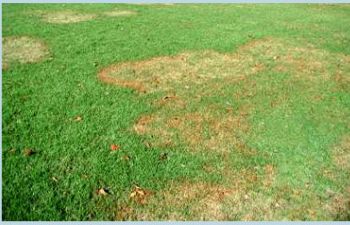
Just like our bodies, your turf grass demands a certain nutritional formula to retain optimal health. Unfortunately, nature alone doesn’t always provide enough of these vital nutrients, which means they need to be added to your soil during fall feeding. One of the most important yet overlooked nutrients for healthy turf is potassium.
Potassium (or potash) is typically not the first ingredient listed on a fertilizer bag. However, potassium is just as needed as other macronutrients like nitrogen and phosphorous when it comes to healthy plant growth. In fact, as a “macro” nutrient, potassium is needed in larger amounts compared to micronutrients like zinc, iron and magnesium.
What Can Potassium Do For Your Grass?
Potassium is a growth catalyst and it plays several critical roles in your turf nutrition. First, potassium supports the uptake of water and nutrients in your grass while also helping synthesize proteins and starches. In addition, potassium fosters thicker cell walls within your grass blades, which helps your turf withstand environmental stresses like drought, heat, cold and disease.
Symptoms of Potassium Deficiency in Your Turf
If you are not sure whether your grass plants are getting enough potassium there are some telltale signs to look for, including the following:
- Chlorosis (a yellowing of the leaves and possible shedding and defoliation)
- Less Resilient/Poor Resistance to Ecological Change
- More Susceptible to Disease
- Low Soil pH
Fall feeding and seeding is a great time to repair summer damage, promote winter survival and improve turf density and color in the spring. To ensure the best fall feeding for your grass, include vital nutrients like potassium. For more tips on what nutrients your plants and grasses need throughout the year, call Pannone’s Lawn Pros & Landscaping.
Posted on behalf of
1444 Buford Hwy
Cumming, GA 30041
Phone: (678) 294-0351
Email: pannoneslawnpros@gmail.com
Monday - Saturday 8:00 AM – 6:00 PM
